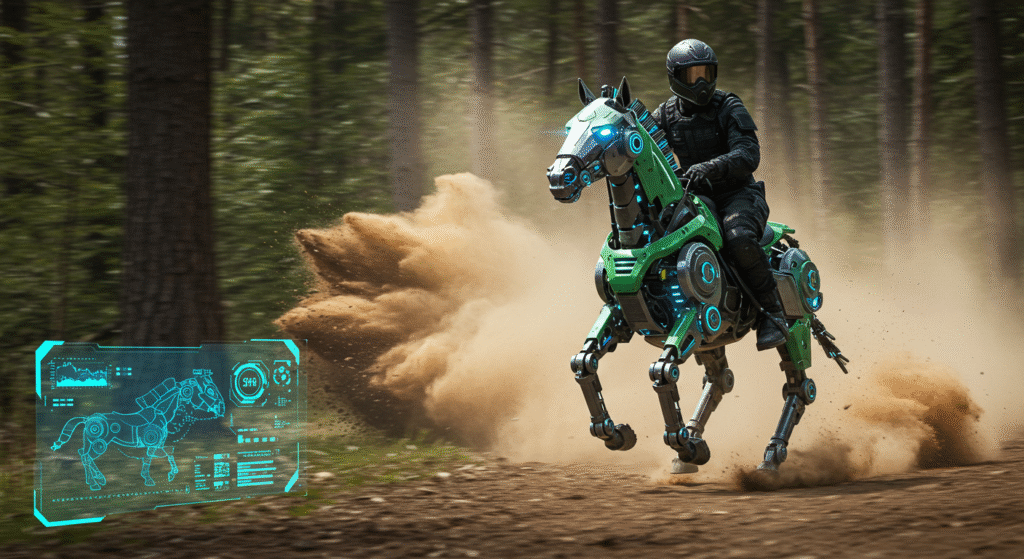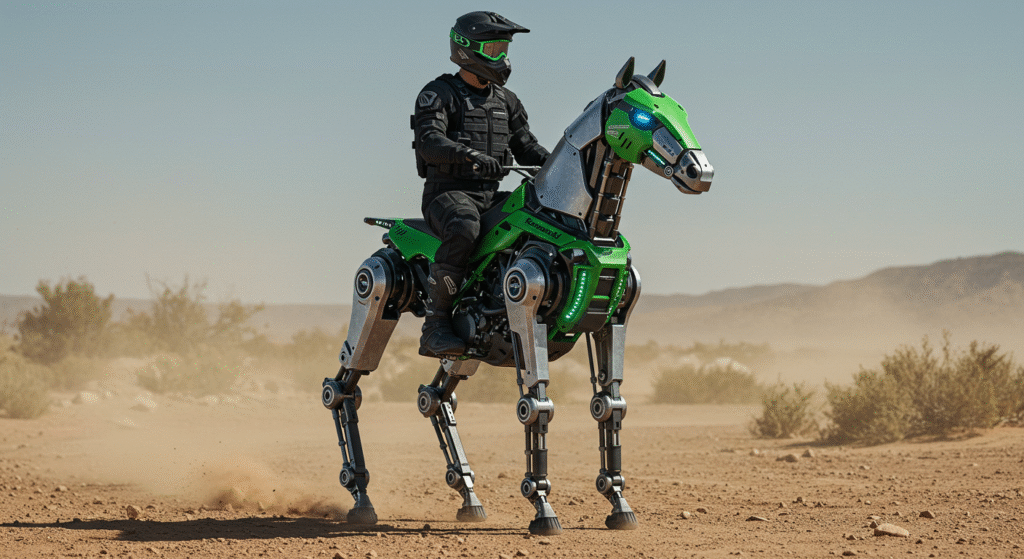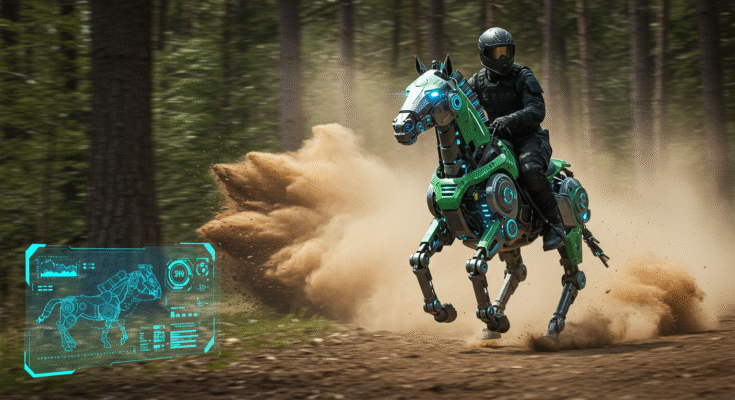You’ve seen robot dogs and drones, but prepare to be amazed by the next generation of robotics. From a metal horse that carries humans to a snake robot that navigates underwater pipelines, the world of robotics is evolving in ways that were once confined to the realm of science fiction. These machines not only mimic animal movements but also perform tasks that humans cannot. Let’s explore 20 groundbreaking robotic innovations that are changing the landscape of technology and engineering.

1. Kawasaki Coro Robotic Horse (2025)
Kawasaki, known for its motorcycles, has ventured into the realm of robotics with the Coro robotic horse. This full-sized machine is designed for mobility in challenging terrains where traditional vehicles fail. It balances itself using AI, allowing riders to simply direct it without reins. Currently being tested for agricultural and rescue missions, the Coro is a high-tech companion for off-grid adventures.
2. Illum Snake Robot
The Illum robot, developed in Norway, resembles a living snake and is designed to inspect deep-sea pipelines. With no eyes or emotions, it excels at navigating tight spaces and can swim for kilometers, making it ideal for underwater inspections where human divers cannot go. Its modular design allows for various attachments, enhancing its versatility.
3. Ghost Swimmer Roboshark (U.S. Navy)
The Ghost Swimmer is a top-secret robotic shark used by the U.S. Navy for stealth missions. Mimicking the appearance and movement of a real shark, it can dive up to 300 feet underwater and is employed for surveillance and inspections without drawing attention. If you spot a toothless, eyeless shark, it might just be the Navy at work.
4. Festo E-otion Butterflies
Festo’s E-otion butterflies are robotic creations that fly in formation, mimicking real butterflies. Equipped with infrared sensors and GPS, they avoid collisions and are used for tech demonstrations and future drone experiments. Their silent flight adds to their charm, making them a fascinating blend of nature and technology.

5. Unitary Robot Dog
The Unitary robot dog has become a social media sensation, confusing real dogs with its lifelike movements. This four-legged robot can run, dance, and even perform flips, all controlled via an app. With advanced features like obstacle avoidance and voice control, it’s being used for security and entertainment, proving that robots can be both functional and fun.
6. Salamandra Robotica V3
The Salamandra Robotica V3 is a remarkable creation that can crawl on land and swim underwater, inspired by the movement of real salamanders. Developed by scientists in Switzerland, this robot aids in medical research by studying vertebrate movement and spinal cord function, making it a valuable tool for understanding human mobility.
7. Wearable Cyborg Exoskeletons

Exoskeletons are wearable robotic suits that enhance human capabilities, allowing individuals to walk again after injuries or lift heavy objects with ease. Companies like Cyberdine and Saros Robotics are pioneering this technology, which is already being used in rehabilitation and industrial settings, bringing us closer to the dream of superhuman abilities.
8. Robotic Whale Shark (Ghost Tech)
China has developed a life-size robotic whale shark that mimics the gentle giant’s movements. This robot is used for underwater research and surveillance, showcasing how even the largest creatures can be replicated for scientific purposes. Its realistic design and quiet operation make it an effective tool for marine exploration.
9. Cyborg Beetles
Researchers at UC Berkeley have created cyborg beetles that can be controlled remotely. By attaching miniature computers to real beetles, scientists can steer them for search and rescue missions or exploration in hazardous environments. This innovative approach combines biology with technology in a way that could revolutionize how we conduct missions in dangerous areas.
10. Plurobot
The Plurobot, another creation from Switzerland’s EPFL lab, is inspired by the Plurodil’s Walt salamander. With 27 joints and a design that mimics vertebrate movement, it helps researchers understand how the brain controls locomotion, making it a significant advancement in robotics and neuroscience.
11. Sharkzilla
Sharkzilla is a massive, 50-foot robotic shark designed for entertainment rather than military use. Built by the Mythbusters team, it features working jaws and a powerful motorized body capable of testing the bite force of a real shark. This entertaining creation showcases the fun side of robotics while providing insights into marine biology.
12. Snail Robots
These robotic snails are designed to work as a swarm, communicating and navigating tight spaces. Developed for research and microtask missions, they can carry mini tools and are being explored for applications in medical research and inspection tasks where traditional robots struggle.
13. Mantis Hexopod Walking Machine
Mantis is the largest ridable hexopod robot, standing 9 feet tall and weighing over two tons. Created in the UK,



